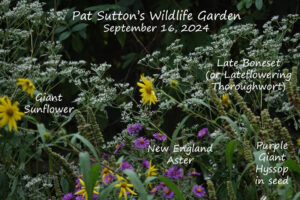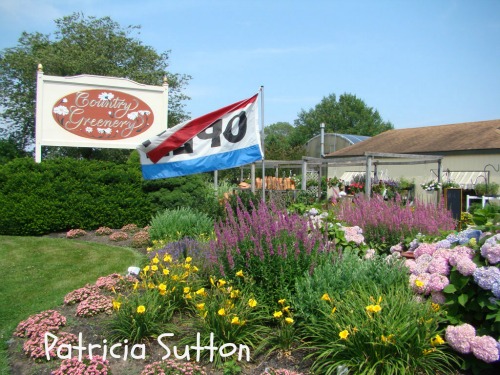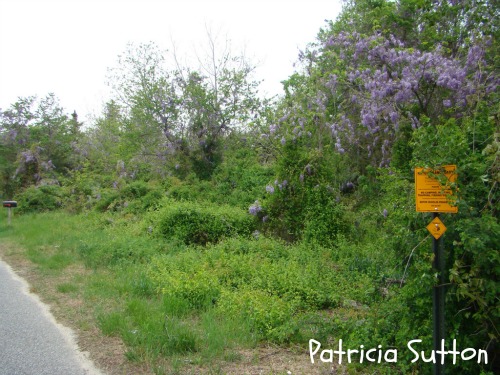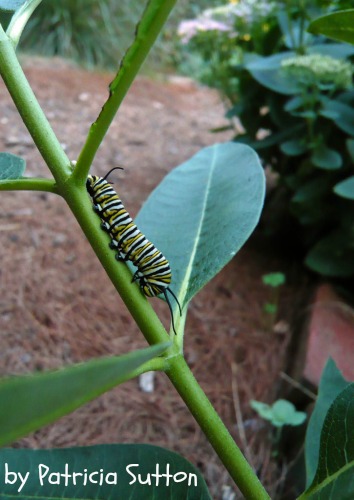
Hi Gang,
My list, “Some Sources of Native Plants in 2025,” includes THE BEST sources of native plants that I feel comfortable recommending. So, check it out and visit websites and facebook pages to learn of each of their hours and 2025 offerings! Consider yourselves very, very fortunate that there are so many sources of native plants. That was NOT the case when I began planting natives in the late 1970s and 1980s, or even in the 1990s or early 2000s!
You will find my 6-page “Some Sources of Native Plants in 2025” at the end of this post, 2nd Edition (05-01-25).
To help people find the top ranked plants in their county Doug Tallamy, author of Bringing Nature Home, has worked with National Wildlife Federation’s Native Plant Finder (a work in progress).
A number of websites have searchable Native Plant Databases with filters to help you generate lists of plants suited for various sites on your property. Some of my favorites follow: Prairie Nursery, Prairie Moon Nursery, Lady Bird Johnson Wildflower Center, and Jersey-Friendly Yards Website which has filters for “native plants only” (@ 318), wildlife value, region, ecoregion (barrier island/coastal, Pinelands), deer resistant, drought tolerance, salt tolerance, and many more filters. Have at it and see what may work in your yard!
PLEASE NOTE: many native plant nurseries are not like the nursery down the road. Often they are owned, maintained, and run by a caring native plant grower who is surviving by also working a 2nd job or sometimes even a 2nd full-time job that covers their health insurance and most of their income. This being the case, they are not available 24-7 to answer all your questions. But when they are open or hosting a pop-up sale, they eagerly and gladly share their knowledge and will guide you towards the best native plants for your site. These same growers collect their own local native seeds or cuttings (they do not dig up from the wild), and they do not use systemic Neonicotinoid Insecticides that would cancel out future generations of butterflies and moths (more on Neonics below). So, don’t panic when their milkweeds have aphids; but instead realize that if there are no aphids, it means the grower has spent hours hand picking them off. Know too that growing from seed can be a lengthy process. The Turk’s-Cap Lily, Lilium superbum, that I purchased from Clemenson Farms Native Nursery in 2014 (now a patch of 44 stalks a/o May 2024) took the Clemensons 8 years to grow out from seed to plant that could be sold. Understand too, that some natives are slow to break ground in spring so are not going to be available during early-season sales: milkweeds, Partridge Pea, and Joe-pye-weed to name a few.
Once hooked on wildlife gardening with native plants, it can be a real challenge to find native plants. Yes a few have been mainstreamed, and the nursery down the street may carry them. But BEWARE OF CULTIVARS OF NATIVE PLANTS. Cultivars are plants created or selected for specific characteristics such as early blooming or color, often at the expense of nectar, berries (the plants may be sterile), and sometimes even the leaf chemistry is changed so the plant can no longer be used as a caterpillar plant. We (wildlife gardeners) want the nectar, the berries, and we want the leaf chemistry intact so our butterflies can create the next generation!
That said, some straight natives might be ill behaved and total thugs, overwhelming other plants in your garden and leading to hours and hours spent thinning them every single year. This is the case with Cutleaf Coneflower. In 2009, a friend shared a cultivar of this plant with me (Cutleaf Coneflower, Rudbeckia lacinata “Herbstsonne,”) that is a Chocolate Cake, always full of pollinators, and not a thug at all because it is sterile. I’ve raved about my Cutleaf Coneflower for years, many have planted the straight native, and been frazzled by its rambunctious wanderings.
Be careful too that your plants are Neonicotinoid free. Neonicotinoids are systemic (get into every part of the plant, including pollen, nectar, even dew) pesticides that are applied to many commercially-available nursery plants and are harmful to bees, caterpillars, moths, butterflies, and other beneficial pollinators.
Speak up when you purchase plants. Ask if the nursery uses Neonicotinoid Insecticides. If they don’t know what you are talking about, it sounds like a nursery to avoid. If they proudly share that they do not use Neonicotinoid Insecticides (verbally and/or on their website), they are a nursery “in the know” and a nursery to support. The Xerces Society’s publication, “Protecting Pollinators from Pesticides: Buying Bee-Safe Plants,” addresses asking nurseries these important questions and is available HERE. There is a complimentary Xerces Society publication for nurseries, “Offering Bee-Safe Plants: A Guide for Nurseries,” available HERE. Let nurseries you frequent know about it. If you find that any of the nurseries on my list are “in the dark” and still using Neonicotinoids, please alert me ! ! !
Around the world steps are being taken to protect pollinators from neonics. In 2018, the European Union voted to completely ban all outdoor uses of three types of neonics (citing their impacts to honey bees). Canada followed suit, planning to phase out all outdoor use of three specific neonics in 3-5 years (2021-2023) because of impacts to aquatic ecosystems. In 2016 Connecticut became the first state in the nation to restrict the use of neonicotinoids when the legislature unanimously passed An Act Concerning Pollinator Health (banning sales of neonics for use by general consumers in backyard garden settings). Soon after, Maryland passed a similar bill that restricts the sale of neonics and bans their use by consumers. And in January 2022, New Jersey became the 6th state to pass a similar bill to save pollinators by classifying bee-killing neonicotinoids (also known as neonics) as restricted use pesticides.
Educate yourself about Neonics by reading the following:
- Xerces Society’s “Protecting Bees From Neonicotinoids in Your Garden, 2nd version (includes list of products with neonics in them).”
- Xerces Society’s How Neonicotinoids Can Kill Bees, the Science Behind the Role These Insecticides Play in Harming Bees (in-depth study, 2nd Edition)
- Xerces Society’s “Neonicotinoid Movement in the Environment” POSTER (how neonics move through the landscape and are being found even where they were not used)
- American Bird Conservancy’s Neonicotinoid Insecticides Harm The Little Creatures, including how 90 percent of food samples taken from Congressional cafeterias contain neonicotinoid insecticides (highly toxic to birds and other wildlife) .
HUGE IINSECT DIE-OFF / INSECT APOCALYPSE
- ‘A car “splatometer” study finds huge insect die-off’
Nov. 13, 2019, by Damian Carrington, Environmental Editor, The Guardian
Measuring how many bugs fly into car windshields might sound silly. But to scientists predicting an “insect apocalypse,” the numbers are deadly serious. - ‘Insect apocalypse’ poses risk to all life on Earth, conservationists warn Feb. 12, 2020, by Damian Carrington, Environmental Editor, The Guardian
- The Insect Crisis, The Fall of the Tiny Empires That Run the World, by Oliver Milman. 2022. A devastating examination of how collapsing insect populations worldwide threaten everything from wild birds to the food on our plate.
BIRDS ARE VANISHING
- “Birds are Vanishing from North America”
The number of birds in the United States and Canada has declined by 2.9 billion, or 29 percent, over the past 50 years (1970-2019), scientists find (Science, 2019). - “A Neonicotinoid Insecticide Reduces Fueling and Delays Migration in Songbirds,” by Margaret Eng, Bridget Stutchbury, Christy Morrissey. Science, 13 September 2019, Vol. 365, Issue 6458, pp. 1177-1180.
WHAT WE CAN DO
Here are just a few of the things that each and every one of us can do:
1. Plant NATIVES, especially Keystone Species (read Doug Tallamy’s books to understand what Keystone Species are). If you live in the East, the “Eastern Temperate Forests – Ecoregion 8″ plant list should be the backbone of your plantings! If you live elsewhere, chose your Ecoregion HERE for your list of Keystone Species.
2. Ask nurseries you frequent if their native plants have been treated with Neonicotinoids (see Xerces Society’s document, “Protecting Pollinators from Pesticides: Buying Bee-Safe Plants,” for tips and how to ask these important questions) . If they don’t know, ask them to find out. If the answer is yes, don’t purchase and explain why, that Neonics are hazardous to the wildlife you are trying to attract and benefit.
3. Leave fallen leaves on the ground: they are full of insect life, they protect tree and shrub and perennial roots, they break down and naturally nourish your soil, and they prevent erosion. Listen to Doug Tallamy’s talk about his latest book, The Nature of Oaks (search youtube Doug Tallamy Nature of Oaks), and learn that oak leaves are the BEST fallen leaves to LEAVE on the ground because it takes them so long to break down (3 years or more). All that time (3+ years) they are providing for an abundance of LIFE that needs fallen leaves to survive. Heather Holm calls these leaves “Soft Landings” for the many caterpillars feeding on the tree above to land in and then nestle down into as they metamorphose into the next life stage before emerging as an adult butterfly or moth the following year. To truly preserve the life in leaf litter do not mow it / mulch it (that would chop up all that life using it).
4. DO NOT USE Pesticides (including Organic – they KILL too) or Herbicides or synthetic Fertilizers
5. Turn outdoor lights OFF at night (use motion sensor lights instead)
6. Remove as many invasive plants as possible on your property
7. Share some of your native “Chocolate Cake” perennial divisions (that are also Keystone Species: Asters and Goldenrods, for example) with others to help get them hooked
8. Read and give Doug Tallamy’s books (Bringing Nature Home, Nature’s Best Hope, The Nature of Oaks, and How Can I Help?: Saving Nature with Your Yard) to family members, friends, co-workers, neighbors.
9. If you ever have a chance to hear Doug Tallamy speak, BE THERE and bring your neighbor, friend, family member, landscaper, lawn care service worker so they can learn to speak the same language. In the meantime Google “YouTube videos (or podcasts) Doug Tallamy” and you’ll have dozens to choose from, many of which are keynote talks he’s given about the importance of insects, native plants, fallen leaves, and much more. Watch Doug Tallamy’s presentations and what you learn may change your life and/or the way you view life. Share video links with neighbors, friends, family members, co-workers.
10. Read and give Heather Holm’s books about beneficial pollinators (Pollinators of Native Plants; Bees, An Identification and Native Plant Forage Guide; and Wasps, Their Biology, Diversity, and Role as Beneficial Insects and Pollinators of Native Plants) to family members, friends, co-workers, and neighbors to help you (and others) understand beneficial pollinators. You’ll learn key practices like leaving stem stubble during spring garden clean up and standing dead trees (these stems and dead trees provide pollinator nesting sites), utilize fallen branches and tree trunks to line garden or woodland paths (ditto: potential nest sites), leave fallen leaves, and avoid too much hardscaping, mulching, and turf so that ground-nesting pollinators have safe places to nest.
Some Sources of NATIVE PLANTS: 2025
by Patricia Sutton
click here for the 6-page printable pdf
2025: 2nd Edition (5-1-25)




